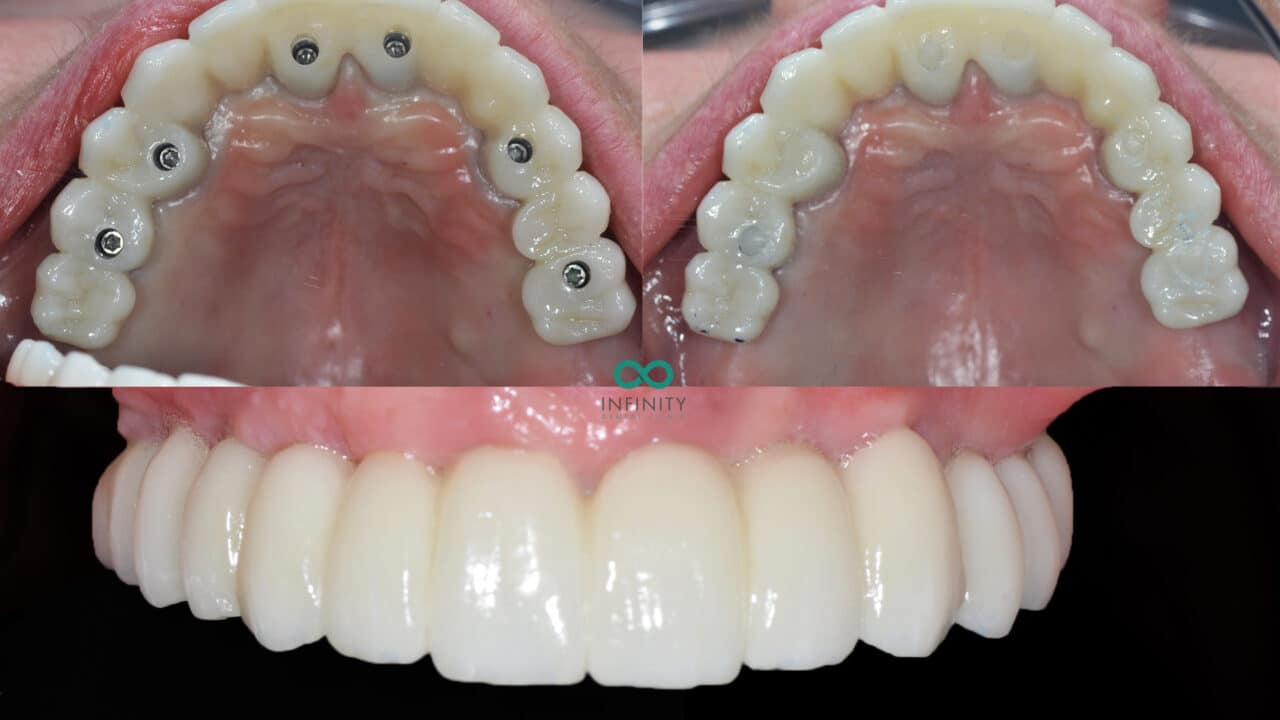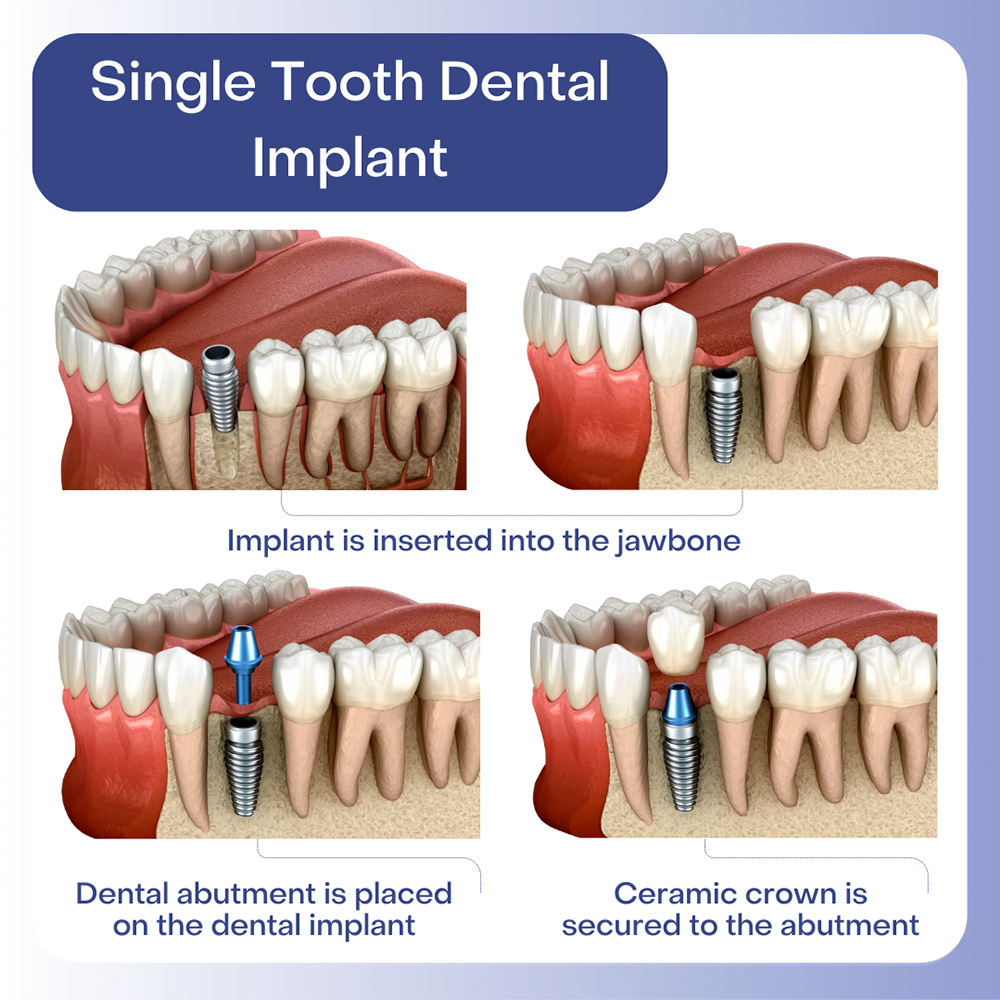The Definitive Guide to Dental Sense
The Definitive Guide to Dental Sense
Blog Article
The Best Guide To Dental Sense
Table of ContentsEverything about Dental SenseNot known Factual Statements About Dental Sense Dental Sense Can Be Fun For Everyone4 Easy Facts About Dental Sense Shown
are medical gadgets surgically dental implanted right into the jaw to restore an individual's capability to eat or their look. They supply assistance for man-made (fake) teeth, such as crowns, bridges, or dentures. When a tooth is shed due to injury or condition, a person can experience complications such as quick bone loss, defective speech, or modifications to eating patterns that lead to discomfort.Oral implant systems consist of an oral implant body and dental implant joint and may additionally consist of an abutment fixation screw. Root canal procedure. The oral implant body is surgically put in the jawbone instead of the tooth's origin. The dental implant abutment is generally connected to the implant body by the joint addiction screw and prolongs with gums right into the mouth to sustain the connected synthetic teeth
(https://filesharingtalk.com/members/608667-dentalsense1)Structure of The Dental Implant System picking oral implants, talk with your oral copyright concerning the prospective benefits and risks, and whether you are a prospect for the procedure. Things to consider: Your overall health is an important factor in determining whether you are a great prospect for oral implants, exactly how long it will require to heal, and how long the dental implant might remain in place.
Smoking may affect the recovery procedure and reduce the long-term success of the dental implant. The recovery process for the implant body might take numerous months or longer, throughout which time you typically have a short-lived joint in location of the tooth. the dental implant treatment: Carefully adhere to the oral health directions provided to you by your oral supplier.
The 25-Second Trick For Dental Sense
Implant failing can result in the requirement for another operation to deal with or replace the implant system. Recovers the ability to eat Restores cosmetic look Aids keep the jawbone from reducing as a result of bone loss Protects the wellness of the surrounding bone and periodontals Aids keep nearby (close-by) teeth secure Improves high quality of life Damages to bordering all-natural teeth during dental implant placement Injury to the surrounding cells throughout surgery, such as sinus perforation Injury during surgical procedure (for instance, crack of surrounding jawbone) Inadequate function, such as feeling like the teeth do not bite together typically A sensation that the tooth hangs or twisting in position resulting from an abutment screw loosening Implant body failure (looseness of the implant body) as a result of systemic infection, which might be much more most likely in clients with unrestrained diabetics issues because of regional infection in bone and gums sustaining the implant body as a result of delayed healing, which might be more probable in clients who smoke Problem cleaning up the periodontals around the dental implant, leading to inadequate dental health Untreated periodontal condition Post-surgical tingling due to nerve impingement or damage Always notify health and wellness care providers and imaging specialists that you have dental implants prior to any type of magnetic resonance imaging (MRI) or x-ray treatments.
FDA is not familiar with any kind of adverse occasions reported for MRI or x-ray treatments with oral implants. Dental implants systems are usually made from products that comply with international consensus criteria of the International Company for Standardization (ISO) or ASTM International. These standards have information of what makes a risk-free product.

An oral implant is a framework that changes a missing out on tooth. With screw-like tools, the cosmetic surgeon inserts an implant into the jawbone, and it acts as a support for a man-made tooth, called a crown.
The smart Trick of Dental Sense That Nobody is Talking About
Some people are not qualified for oral implant surgical procedure. It is for oral surgeons to operate on individuals with: acute illnessuncontrollable metabolic diseasebone or soft cells disease or infectionIf these issues are settled, a person can have the surgery. In, dental cosmetic surgeons avoid operating on people with: If people with any one of the above undergo dental implant surgical treatment, there is a greater risk of the implant stopping working.

Dental dental more implant surgical treatment is a personalized procedure. It's not the exact same for everybody. The adhering to provides a basic introduction of what you can anticipate your dental expert, oral surgeon, periodontist or prosthodontist to do: Place the dental implant surgically. Offer you time to heal. Attach the message and last crown, bridge or denture.
Next off, your surgeon will thoroughly position the dental implant into your jaw. Ultimately, your specialist will certainly reposition your gums and shut the incision with stitches. If your implant is near the front of your mouth, your dental expert will certainly make a temporary tooth for you to put on up until you heal. By doing this, you will not have a gap in your smile while you recover.
Facts About Dental Sense Revealed
Your company can inform you what to expect in your situation. Throughout the recovery phase, your jawbone must fuse to the dental implant. This process, called osseointegration, is essential for stability and lasting success. This process can take anywhere from 3 to nine months. Sometimes, it might take longer.
Once your dental implant heals, your dental practitioner can attach the joint (small connector post) and your final restoration (crown, bridge or denture). This generally takes about one hour to complete and may require a 2nd minor surgery. You should not really feel any discomfort during your oral implant treatment because your copyright will make use of medicine to numb your gum tissues.
Report this page